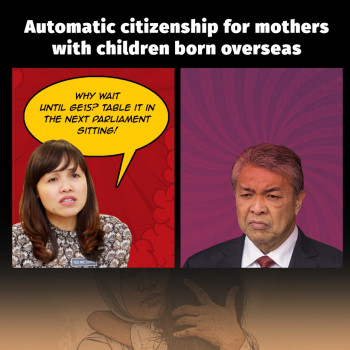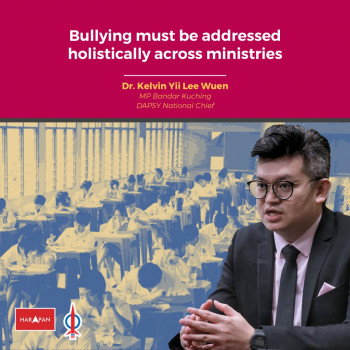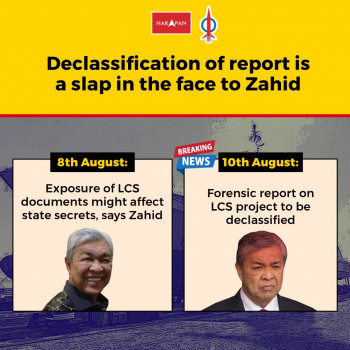By Charles Santiago, Klang MP
 Raw water reserves in all the dams have dropped and some are at critical levels. Water shortage will be further exacerbated as the Meteorological Department has indicated that there will be no rain for the next two months.
Raw water reserves in all the dams have dropped and some are at critical levels. Water shortage will be further exacerbated as the Meteorological Department has indicated that there will be no rain for the next two months.
But the Selangor state government has dismissed a second water rationing exercise.
A day back, raw water reserves from the dam that supports Sg Selangor dropped to an all-time low of 35.69 percent, a decrease of 0.49 percent from the previous day. At this rate, the raw water reserves will drop to the state’s ‘arbitrarily’ established critical cut-off marker of 30 percent within eleven days.
Water processed from Sg Selangor is supplied to about 60 percent of households in Selangor, Putrajaya and Kuala Lumpur.
In February-March 2014, the state used the critical cut off marker of 37 percent raw water reserve standard before initiating water rationing exercise. However, just after four months, the cut-off marker has been dropped by a further seven percent to 30 percent.
The state needs to explain the arbitrariness in determining markers and why a seven-percentage drop this time around.
The use of 30 percent critical cut-off marker is a gamble and could be misleading on the actual raw water reserve availability.
An established process that could give a clearer insight on actual availability of raw water is to determine effective storage or capacity of the dam. This involves estimating the gross useable water minus dead storage.
And such information can be found in the dam’s original designs, which should be available to LUAS and other government agencies.
Dead storage includes water losses from evaporation and ground water absorption due to hot weather, siltation and transmission losses, which involve a 35-kilometer water transfer to the nearest treatment plant.
Estimating ‘dead storage’ involves ascertaining the level of debris, sand/mud and rubbish located at the bottom of the dam.
Thus the popular assumption that the 30 percent raw water reserve could be diverted to the water treatment plant is false and confusing. It will be far lower.
The state has been pumping untreated ex-mine water from Bestari Jaya into Sg Selangor to compensate for the shortfall in raw water reserves and avoid water rationing. At present, 24 pumps are working around the clock feeding ex-mine water into Sg Selangor. I understand new untreated ex-mine ponds have been secured for this purpose.
I have pointed out that ex-mine water contains heavy metals such as lead, zinc, arsenic, chromium and are potentially poisonous. They will pollute Sg Selangor and treatment plants need to be upgraded to clean out these heavy metals.
The Drinking Water Quality Standards findings made public so far by the Ministry of Health (MOH) shows that water sourced from Sg Selangor is safe for drinking.
However, it is important to note that these tests were conducted at high water availability periods. Here the heavy metal dilution will be high and contamination possibilities low.
The Selangor state government, MOH or LUAS have yet to show recent Drinking Water Quality Standards findings given radically shifted weather conditions involving a prolonged dry season. Until new findings are made available, water sourced from Sg Selangor should be treated as unsafe for consumption.
Based on my requests, Menteri Besar Khalid Ibrahim agreed to appoint World Health Organisation experts to undertake a forensic study of using ex-mine water. But he is yet to do so.
As such, my biggest fear is that safe drinking water availability is going to be highly limited in the coming weeks.
As an immediate measure, I call upon the Selangor state government to:
a) ban all car washing throughout the state (commercial and homes);
b) educate consumers on water conservation;
c) stop all bottling of drinking water;
d) make drinking water quality standards findings public on a periodic basis, especially involving heavy metals;
e) begin intensive cloud seeding;
f) establish a multi-stakeholder committee comprising environmental and consumer groups, including business and academics, to address the problem.



